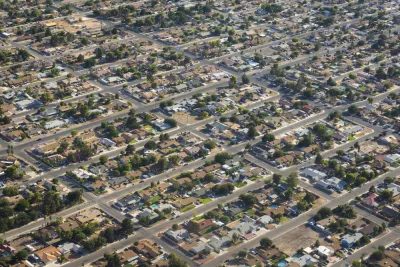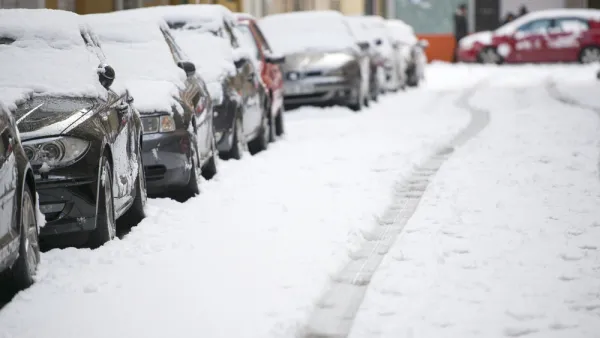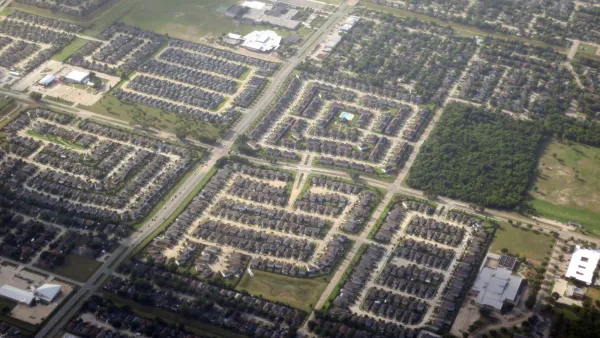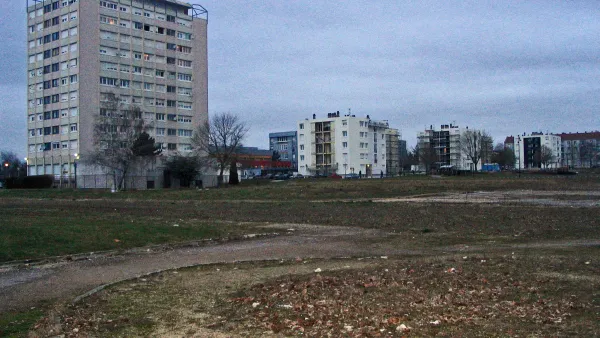American suburbs are growing, and understanding the evolution of suburban sprawl is a useful guide for the future.

[Updated 11/19/2018] In a piece written for his new book, “The Urban Fix: Resilient Cities in the War against Climate Change, Heat Islands and Overpopulation,” Doug Kelbaugh reflects on the history of suburban sprawl and the challenges its continued growth brings.
Kelbaugh isn’t a fan of suburbs — he refers to suburbia as a virus — and he draws from the writings of various academics and journalists to look back at the spread of modern suburbs in the United States, starting after World War II. Suburbs were not only heavily subsidized notions of the American Dream, says Kelbaugh; they were also an attack on nature. “It’s tragic that America not only smeared the suburban compromise of town and country across its 50 states, but it also exported it a world only too happy to embrace the seemingly happy lifestyle they’d seen in the movies and on TV,” he laments.
He continues through the many problems with suburbs. They are unsustainable by encouraging auto dependence, low density, big houses, and environmentally unfriendly lawns. The architecture is soulless. The parking lots are expansive. The intersections are too big. “This is the land of big asphalt, which absorbs solar radiation and creates heat islands even in low-density suburbia,” Kelbaugh notes.
But while cities offer more of what millennials want, they still are moving to the suburbs. Kelbaugh, however, thinks millennials will drive the transformation of suburbs with their desire for more sustainable communities:
Drone deliveries, ride-sharing, car-sharing, AVs that park themselves and connect to house lights and thermostats will be commonplace, as will up to a 50 percent reduction in paved area. Less hardscape won’t be difficult, given the absurdly wide streets in contemporary subdivisions. There will be fewer fences and more common land for recreation, gardens, ponds, woods and wetlands.
The environmental issues with suburbs — the heat, the consumption of precious resources, the air pollution — make reining them in a global concern, says Kelbaugh. Particularly in developing countries with fast-growing metropolises, he believes containing sprawl is imperative in maintaining the quality of life of residents in highly populated areas.
FULL STORY: Reconfronting sprawl: Still paved with good intentions and asphalt

National Parks Layoffs Will Cause Communities to Lose Billions
Thousands of essential park workers were laid off this week, just before the busy spring break season.

Retro-silient?: America’s First “Eco-burb,” The Woodlands Turns 50
A master-planned community north of Houston offers lessons on green infrastructure and resilient design, but falls short of its founder’s lofty affordability and walkability goals.

Delivering for America Plan Will Downgrade Mail Service in at Least 49.5 Percent of Zip Codes
Republican and Democrat lawmakers criticize the plan for its disproportionate negative impact on rural communities.

Test News Post 1
This is a summary

Test News Headline 46
Test for the image on the front page.

Balancing Bombs and Butterflies: How the National Guard Protects a Rare Species
The National Guard at Fort Indiantown Gap uses GIS technology and land management strategies to balance military training with conservation efforts, ensuring the survival of the rare eastern regal fritillary butterfly.
Urban Design for Planners 1: Software Tools
This six-course series explores essential urban design concepts using open source software and equips planners with the tools they need to participate fully in the urban design process.
Planning for Universal Design
Learn the tools for implementing Universal Design in planning regulations.
EMC Planning Group, Inc.
Planetizen
Planetizen
Mpact (formerly Rail~Volution)
Great Falls Development Authority, Inc.
HUDs Office of Policy Development and Research
NYU Wagner Graduate School of Public Service





























